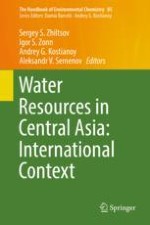This book outlines the current status of water resources management in Central Asia countries, and provides a review of the history, policies and transboundary cooperation regarding water resources in the region. Particular attention is given to the water-energy-food-environmental nexus, and to the application of the UNECE Environmental Conventions in Central Asia. Readers will also learn about the US and German environmental policies applied in Central Asia, and will discover specific case studies on water resources policies in Kazakhstan, China, Kyrgyzstan, Uzbekistan, Tajikistan, Turkmenistan, and Afghanistan.
Together with the companion volumes on Water Bodies and Climate Change in Central Asia and Water Resources Management in Central Asia, it offers a valuable source of information for a broad readership, from students and scientists interested in the environmental sciences, to policymakers and practitioners working in the fields of water resources policy and management, international relations, and environmental issues.
